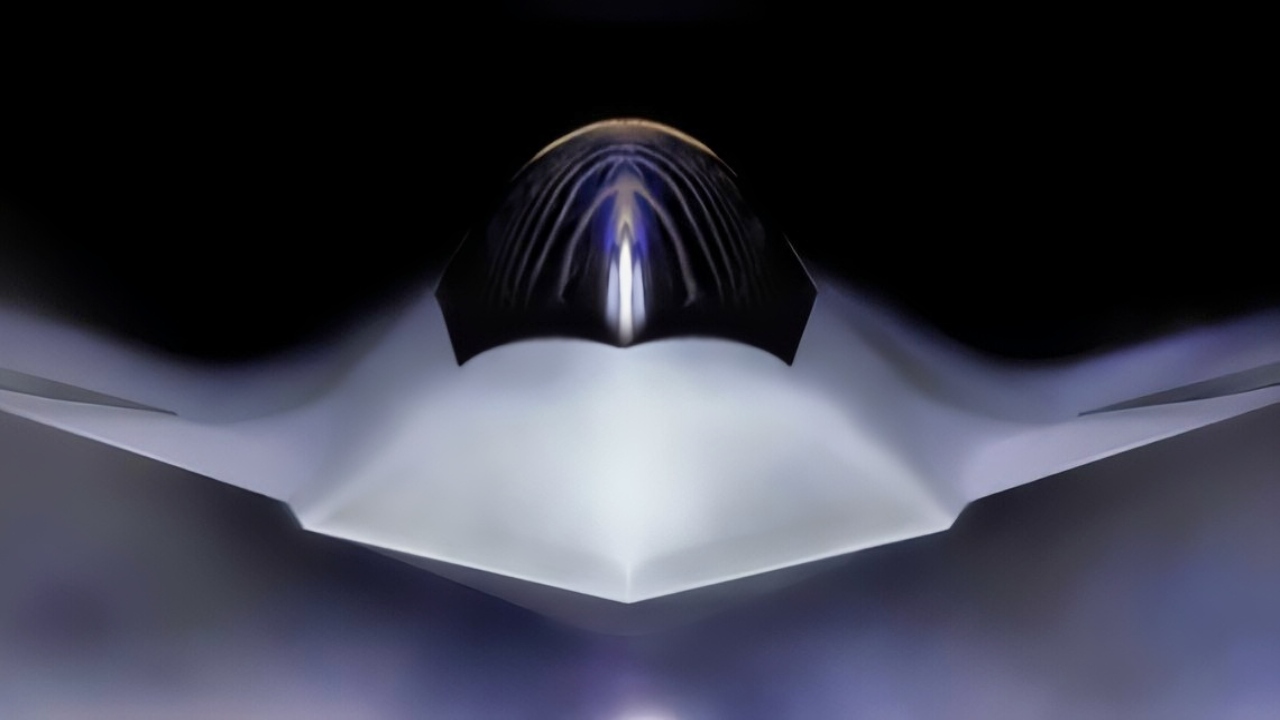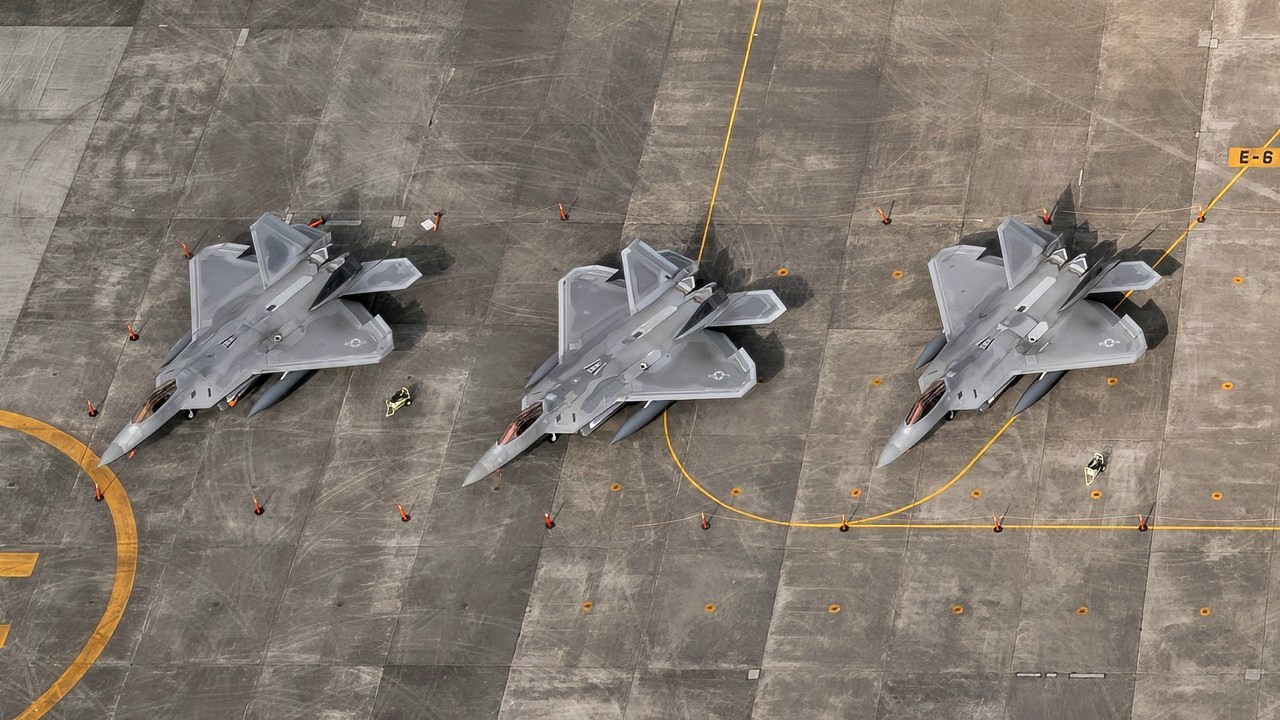The Planned F-47 Fighter Fleet Is Already Too Small to Win a China War: Article Summary
-The Air Force is quietly planning to buy only a small number of next-generation Boeing F-47 fighters—roughly 186 jets—to replace the F-22 Raptor. That is, according to most reports out there.

NGAD Artist Photo. Image Credit: Creative Commons.
-To some experts, that sounds neat and affordable.
-In a real war with China or Russia, it looks dangerously thin.
-Beijing is already fielding hundreds of J-20 and J-35 stealth fighters and is on track for many more.
-Yes, the F-47 will quarterback swarms of Collaborative Combat Aircraft, but drones don’t fix a fundamental problem: too few crewed fighters.
-We may not know the perfect number yet, but we already know one thing—186 is too small.
The F-22’s Replacement Is Being Born Undersized
Every time the Air Force talks about the Next Generation Air Dominance fighter (NGAD), you can almost hear the fine print.
Yes, the Boeing F-47 (as we’ll call it here) will be a leap over the F-22 Raptor.
Yes, it will have longer range, deeper stealth, better sensors, and the ability to quarterback drones and long-range weapons.
Yes, it will be the centerpiece of America’s air superiority game plan for China and Russia.

Boeing NGAD F/A-XX Fighter Rendering. Image Credit: Boeing.
And then you get to the part that should make everyone in the Pentagon nervous: we’re only talking about roughly 186 jets. Well, at least that seems to be the consensus number, at the moment.
That number lines up neatly with the F-22 experience—about 186 or so Raptors in service today after all the cuts and retirements.
But that parallel is exactly the problem.
The F-22 fleet has spent its life trying to do a global job with a regional-sized force.
The idea that we can just repeat that formula with a more expensive, more central aircraft in an even more dangerous world is fantasy.
We may not know the “right” number for the F-47 yet. We already know the wrong one: building a tiny, exquisite fleet and hoping the drones make up the difference.
A Quarterback Without a Team
The sales pitch for the F-47 is compelling.
Think of a stealthy, long-range fighter that doesn’t just dogfight but also commands a small flotilla of Collaborative Combat Aircraft—armed drones carrying extra missiles, jammers, sensors, or decoys.
Instead of a single fighter with eight missiles, you get a human pilot directing multiple unmanned “shooters” and “spotters,” extending your eyes and your reach deep into contested airspace. That is the theory.

Shown is a graphical artist rendering of the Next Generation Air Dominance (NGAD) Platform. The rendering highlights the Air Force’s sixth generation fighter, the F-47. The NGAD Platform will bring lethal, next-generation technologies to ensure air superiority for the Joint Force in any conflict. (U.S. Air Force graphic)
The danger is that we start treating the quarterback as if it’s the only thing that matters.
You still need enough quarterbacks.
Each F-47 will have to do a lot: air superiority, long-range counter-air, escorting bombers and tankers, protecting ships, defending Guam and Japan, plus whatever surprise mission Washington dreams up on a bad day.
Some jets will be forward-based and living under the shadow of Chinese and Russian missiles. Others will be tied down in training squadrons, test units, and maintenance depots. A handful will be lost to accidents over a service life measured in decades.
From a fleet of 186, how many F-47s do you really have when the shooting starts? Sixty? Seventy? Maybe fewer, if a base or two takes missile hits on night one and you lose jets on the ground.
Drones don’t fix that arithmetic. Collaborative Combat Aircraft are force multipliers, not substitutes. A quarterback with no receivers is useless; a squadron of receivers without a quarterback is just expensive wreckage waiting to happen.
China Is Playing a Different Numbers Game
While the Air Force is architecting an elegant 186-jet future, China is doing something much more basic: it’s building a lot of fighters.

Eight U.S. Air Force F-22 Raptors from Joint Base Elmendorf-Richardson, Alaska, sit on the flightline, July 9, 2018, at Yokota Air Base, Japan. Eight F-22s evacuated from Kadena Air Base, Japan due to Typhoon Maria. The F-22 are deployed under U.S. PACOM’s theater security package (TSP) program, which has been in operation since 2004. (U.S. Air Force photo by Yasuo Osakabe)
Beijing has already fielded hundreds of J-20 stealth fighters and is now inducting the carrier-capable J-35 in growing numbers. Those fleets are spread across multiple theater commands, with more airframes coming off the line each year. Layer on top of that a huge inventory of upgraded fourth-generation fighters and a dense network of air defenses and long-range missiles.
In a Taiwan or South China Sea scenario, the United States will not be fighting a clean, symmetric duel of “our F-47s versus their J-20s.” We will be playing an away game against a home team with more fighters, more runways in range, and the ability to surge mass on short notice.
And, at the moment, China is testing 6th-gen fighters, just like the F-47.
The entire point of building the F-47 is to claw back an edge in that environment. You want a platform that can arrive from a distance, stay in the fight, and work with CCAs to carve out lethal airspace. That is a sound concept.
What isn’t sound is pretending you can do it with a boutique fleet that wouldn’t look out of place in a Cold War niche program.
The Air Force Is Already Old and Thin
This isn’t just about China’s numbers. It’s also about the age and shape of our own fighter force.
Today, the Air Force is flying a mix of F-15s, F-16s, F-22s, and F-35s that have to cover everything from homeland defense to Eastern Europe to the Western Pacific. The average fighter is over 30 years old. F-15Cs are fading out. F-16s are stretched. Even the F-35 fleet, while growing, is nowhere near the final program-of-record size.
The F-22, which the F-47 is supposed to replace, is already a small, finite club. Production lines closed years ago. Many Raptors are not fully modernized. Others are tied up in training and test roles. When you strip away the jets that are in depot, in upgrade, or in pieces on the ramp, the number of combat-coded F-22s you can actually throw at a crisis is depressingly low.
Now imagine trying to replace that reality with an even more central aircraft—one that is the heart of your air superiority strategy—and deliberately capping it at essentially the same fleet size.
We are setting ourselves up to run the same play again, only this time against a better-armed defense.
Attrition Is Not a Dirty Word
Part of the problem is psychological. The United States has gotten used to the idea that it does not lose fighters.
We lost very few jets in the post-Cold War air campaigns. Iraq’s air defenses crumbled. Serbia’s SAM belts were dangerous but manageable. Afghanistan’s airspace never presented a serious threat. Even in Syria and Iraq against ISIS, airpower operated under permissive or semi-permissive conditions.
A war with China or Russia would not look like any of that. It would mean dense SAM coverage, long-range air-to-air missiles, aggressive electronic warfare, cyber attacks, and a constant threat to the bases, tankers, and AWACS aircraft that allow fighters to do their work. Some airframes will not come home. Others will land with damage that keeps them out of the fight for months.
If you start a great-power war with only 186 F-47s and you lose even a handful early on, you are not replacing those jets in any relevant amount of time. The production line will be too slow, the industrial base too constrained, the training pipeline too long.
In that world, buying “just enough” is a polite way of saying you’re planning to run out.
We Don’t Need a Perfect Number — We Need to Admit 186 Is Wrong
Will anyone in the Pentagon or on Capitol Hill stand up and say, “The exact right number of F-47s is 247”?
Of course not.
There is no magical computer or super expert who can spit out a perfect figure for a 30-year program in a global environment that changes every month.
What we can say with confidence is that a replacement for the F-22, designed to anchor air superiority in a two-peer world, should not start life as another tiny, exquisite fleet. Especially not when China is building stealth fighters by the hundred and designing its own manned-and-drone “families of systems” to match us.
We should be talking about a program of record that assumes higher attrition and real surge capacity. We should be thinking in terms of a force that can absorb losses, cover multiple theaters, and still have jets left for training and testing. We should design the industrial base around that demand signal from the beginning, not scramble to expand it later when the line is already winding down.
Maybe the right range is 250–300 F-47s. Perhaps it is something slightly lower once F-35 numbers mature and CCAs prove themselves. The point is that the conversation needs to move off the comfort blanket of “roughly 186” and acknowledge that this is a floor, not a ceiling.
The Real Mistake Would Be Repeating the F-22 Story
The F-22 Raptor was—and is—an extraordinary aircraft. It also became a cautionary tale: a world-class fighter built in numbers too small to shape the world it was designed for.
The Boeing F-47 now sits on the same path. If we let budget convenience and old habits dictate fleet size, we will end up with another elite squadron-sized answer to a continental-sized problem.
Drones will help. Better sensors will help. Smarter networking will help.
But at some point, air superiority still comes down to how many fighters you can put into the air on day one, day ten, and day one hundred of a real war.
We do not have to know the perfect number yet. We just have to stop pretending that replacing the F-22 with essentially the same tiny fleet—renamed, re-skinned, and surrounded by buzzwords—is a serious plan for the age of China and Russia.
About the Author: Harry J. Kazianis
Harry J. Kazianis (@Grecianformula) is Editor-In-Chief and President of National Security Journal. He was the former Senior Director of National Security Affairs at the Center for the National Interest (CFTNI), a foreign policy think tank founded by Richard Nixon based in Washington, DC. Harry has over a decade of experience in think tanks and national security publishing. His ideas have been published in the NY Times, The Washington Post, The Wall Street Journal, CNN, and many other outlets worldwide. He has held positions at CSIS, the Heritage Foundation, the University of Nottingham, and several other institutions related to national security research and studies. He is the former Executive Editor of the National Interest and the Diplomat. He holds a Master’s degree focusing on international affairs from Harvard University.











RV
November 24, 2025 at 11:37 am
This is sounding like the WWII scenario when the Germans fielded Tiger and King Tiger tanks which were outnumbered against the Allies’ Shermans and Russian T-34s.